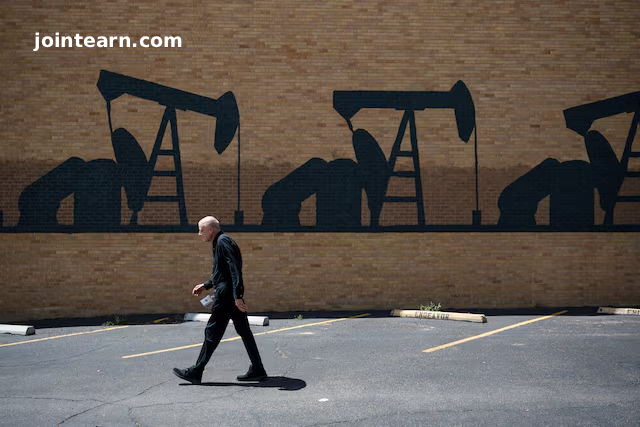
MIDLAND, TEXAS – November 21, 2025 – The Permian Basin, the heart of the U.S. shale industry, is beginning to show the economic strain of sustained low oil prices, even as production remains high. Local businesses and oilfield workers are feeling the pinch as West Texas oil prices hover around $60 a barrel, raising concerns about profitability and long-term sustainability.
Mark Waters, 65, owner of Tie Specialties, a tool and safety equipment supplier in Odessa, Texas, reports a 25% drop in oilfield sales over the last four to six months. “This is my sixth boom-bust cycle,” he said. “Everybody I’ve talked to says the future is not very bright for the next couple of years.”
Economic Ripple Effects
The Permian Basin economy, which includes towns like Midland and Odessa, is highly dependent on the oilfield industry. Evidence of the downturn is appearing in idled rigs, liquidation of equipment by service firms, and layoffs at major producers such as Chevron and ConocoPhillips. Nationally, oil and gas production employment has fallen by 4,000 jobs between January and July 2025, with roughly 370,000 Texans employed in the sector at the start of the year.
Even with record U.S. output reaching 13.9 million barrels per day (bpd), the industry faces slowing growth. Efficiency gains are reaching limits, and producers are increasingly forced into more expensive drilling areas.
“Investment returns at $55 to $60 per barrel are not what they were five years ago because the best wells have been drilled,” said Denzil West, CEO of Admiral Permian Resources.
Rising Costs and Challenges
Inflation and trade tariffs have pushed production costs higher, making profitability more difficult. Drilling a shale well now costs $10 million to $12 million, 5–10% higher than last year. Analysts say that prices need to be around $70 per barrel to maintain and grow production, but West Texas Intermediate crude remains under $60, according to the U.S. Energy Information Administration, which forecasts an average of $51.26 per barrel in 2026.
Companies like Surge Energy continue drilling at current prices but at a slower pace, while service providers such as SLB and Halliburton have idled equipment and laid off staff due to reduced demand.
Impact on Local Communities
The slowdown is hitting the broader community. Midland’s unemployment rose to 3.6% in August, a level not seen since mid-2022. Small businesses are seeing fewer customers, and layoffs are forcing local residents to rethink their careers. Yogashri Pradhan, laid off for the third time, launched IronLady Energy Advisors to consult on production and reservoir engineering.
“We’re seeing a lot more panic at $60 oil,” Pradhan said. “It’s affecting both local jobs and the small businesses that rely on oilfield workers.”
Outlook for the Shale Industry
Analysts expect any near-term growth in U.S. oil output to come from deepwater offshore fields rather than shale. With rig counts declining—down 52 rigs to 252 at the end of October—and the best drilling acreage largely tapped, the Permian faces an uphill battle to sustain profitability.
The combination of lower prices, higher costs, and continued OPEC output is creating what industry leaders describe as “upside-down economics”, where the cost to extract oil exceeds the revenue in many cases, forcing companies to prioritize investor returns over expansion.
Leave a Reply